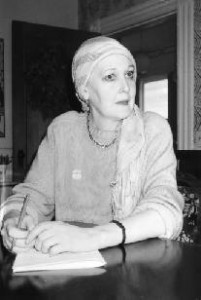4. The Tri-city: Cities Getting Rich from the Bomb
Jan. 4, 2013
Chapter 1: The United States
Part 1: Hanford's Hidden Past
Part 1: Hanford's Hidden Past
In stark contrast to the bare earth and rocks of the nuclear complex, the residential areas to the south of Hanford are a lush green. The towns of Richland, Pasco, and Kennewick, which have a total population of eighty thousand, are together known as the Tri-city.
Before the war, they were small, sleepy towns consisting of a railroad station and not much else. However, the construction of the nuclear complex brought a sudden prosperity to the region, and they became three of the wealthiest towns in America.
It was no easy task to find people in the Tri-city willing to discuss the effects of radioactive contamination with us. Responses to our inquiries were along the lines of "What do you want to know about that kind of thing for?" and "Illnesses? Anyone can get sick, you know." One family in Kennewick told us that the people in the Tri-city couldn't say anything. They added, however, that if we went to Seattle their daughter would speak on their behalf.
The Jurji family moved to the Tri-city from California in 1949, the same year that Green Run was carried out in response to developments in the Soviet Union's nuclear weapons program. The father was a welder who had come to work on extensions at the Hanford site. After his daughter Judith had graduated from high school, she left Hanford for Seattle and only found out about the nuclear contamination in 1987.
Just to be on the safe side she went to a doctor, only to be told that she had a thyroid condition. She had often felt so ill that it was an effort to go to work, but she had never known the cause.
Judith was not the only one ill in the family. Six of her relatives including her mother and sisters were plagued with the same condition. When she told them what she had heard, however, her family was shocked. The local papers had made no mention of any radioactive contamination; it was the first time they had heard such a story. Judith was warned not to talk about the article in the town. Everyone in the Tri-city area knew the consequences of speaking out against goings-on at the nuclear complex: Most of the residents are connected to the plant in some way or another, and any accusations of misconduct or incompetence, even if confined to within the site, would mean the loss of one's job and possibly further harassment from the management.
The fact that a high school in the Tri-city area has a mushroom cloud for its emblem illustrates the people's dependency on the Hanford nuclear complex. The local people's suspicion of strangers can perhaps be explained by the knowledge that their lives are tied to the future of the plant. At the same time, the people have grown up in constant awareness of the arms race with the Soviet Union, leaving them with strong anti-Soviet and anti-Communist tendencies. In the daughter's opinion, the combination of these two factors has allowed the people to accept without question whatever the government tells them—or does not tell them.
"Those of us on the outside must stand up for the rights of those in the Tri-city area to speak freely," she said. At present in the process of organizing the sufferers into a support group, she has found seventy people so far in Seattle alone. Their first meeting was held in May 1989 in Spokane. "Forty-four years after the end of the war, I can finally understand what the survivors of Hiroshima and Nagasaki must be going through," she concluded.








